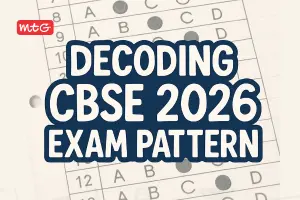
NCERT class 7 mathematics chapter 8 – “Rational Numbers” teaches us that rational number is defined as a number that can be expressed in the form p/q , where p and q are integers and q ≠ 0.
For the CBSE exams, practice multiple-choice questions (MCQs) to prepare for the objective questions. We have provided Class 7 MCQ Questions on “Rational Numbers” paired with comprehensive explanations. CBSE is emphasizing the role of MCQs as they assist in understanding the concepts completely.
As compared to subjective questions, MCQs are very different so practicing and understanding how to get appropriate answers in MCQs is very essential. To revise the main concepts, students should practice all the MCQs with the answers given. This will also help them familiarize themselves with the kinds of questions that might appear in the board exams.
Previous – Comparing Quantities Class 7 MCQS With Answers
Important – CBSE Class 7 Syllabus For 2024-25 Session
You will also like – Class 7 Math MCQ Question with Answers
Topics covered in “Rational Numbers”
- Need for Rational Numbers
- What are Rational Numbers
- Equivalent Rational Numbers
- Positive and Negative Rational Numbers
- Rational Numbers on a Number Line
- Rational Numbers in Standard Form
- Comparison of Rational Numbers
- Rational Numbers between two Rational numbers
- Operations on Rational Numbers
CBSE Class 7 Mathematics Rational Numbers MCQs – PDF Download
Answers –
Summary for NCERT Class 7 Mathematics Chapter 8 – “Rational Numbers”
- A number that can be expressed in the form p/q, where p and q are integers and q ≠ 0, is called a rational number.
- All integers and fractions are rational numbers
- If the numerator and denominator of a rational number are multiplied or divided by a non-zero integer, we get a rational number which is said to be equivalent to the given rational number.
- Rational numbers are classified as Positive and Negative rational numbers.
- When the numerator and denominator, both, are positive integers, it is a positive rational number.
- When either the numerator or the denominator is a negative integer, it is a negative rational number.
- The number 0 is neither a positive nor a negative rational number.
- A rational number is said to be in the standard form if its denominator is a positive integer and the numerator and denominator have no common factor other than 1.
- There are unlimited number of rational numbers between two rational numbers.
- Two rational numbers with the same denominator can be added by adding their numerators, keeping the denominator same.
- Two rational numbers with different denominators are added by first taking the LCM of the two denominators and then converting both the rational numbers to their equivalent forms having the LCM as the denominator.
- While subtracting two rational numbers, we add the additive inverse of the rational number to be subtracted to the other rational number.
- To divide one rational number by the other non-zero rational number, we multiply the rational number by the reciprocal of the other.






























